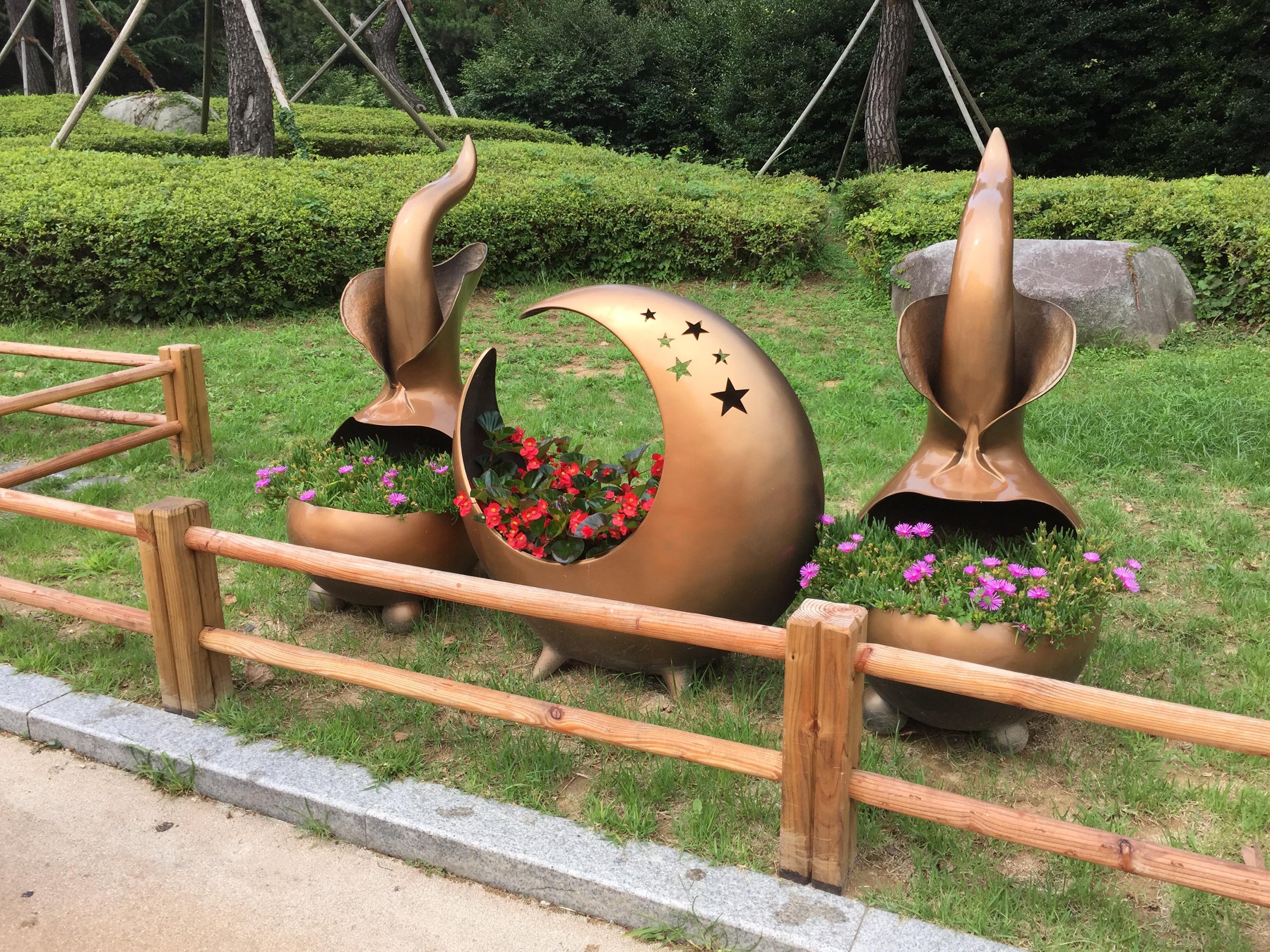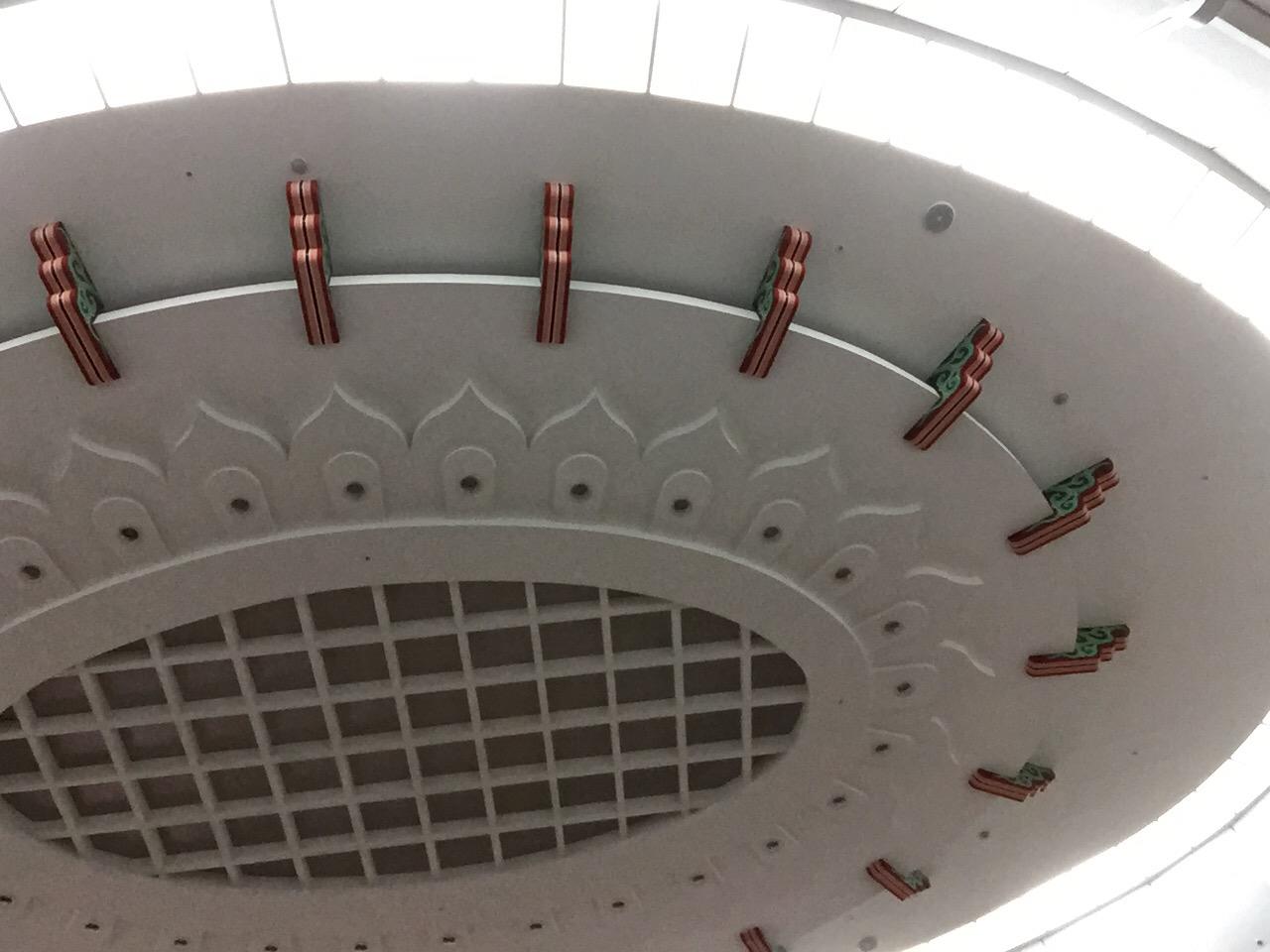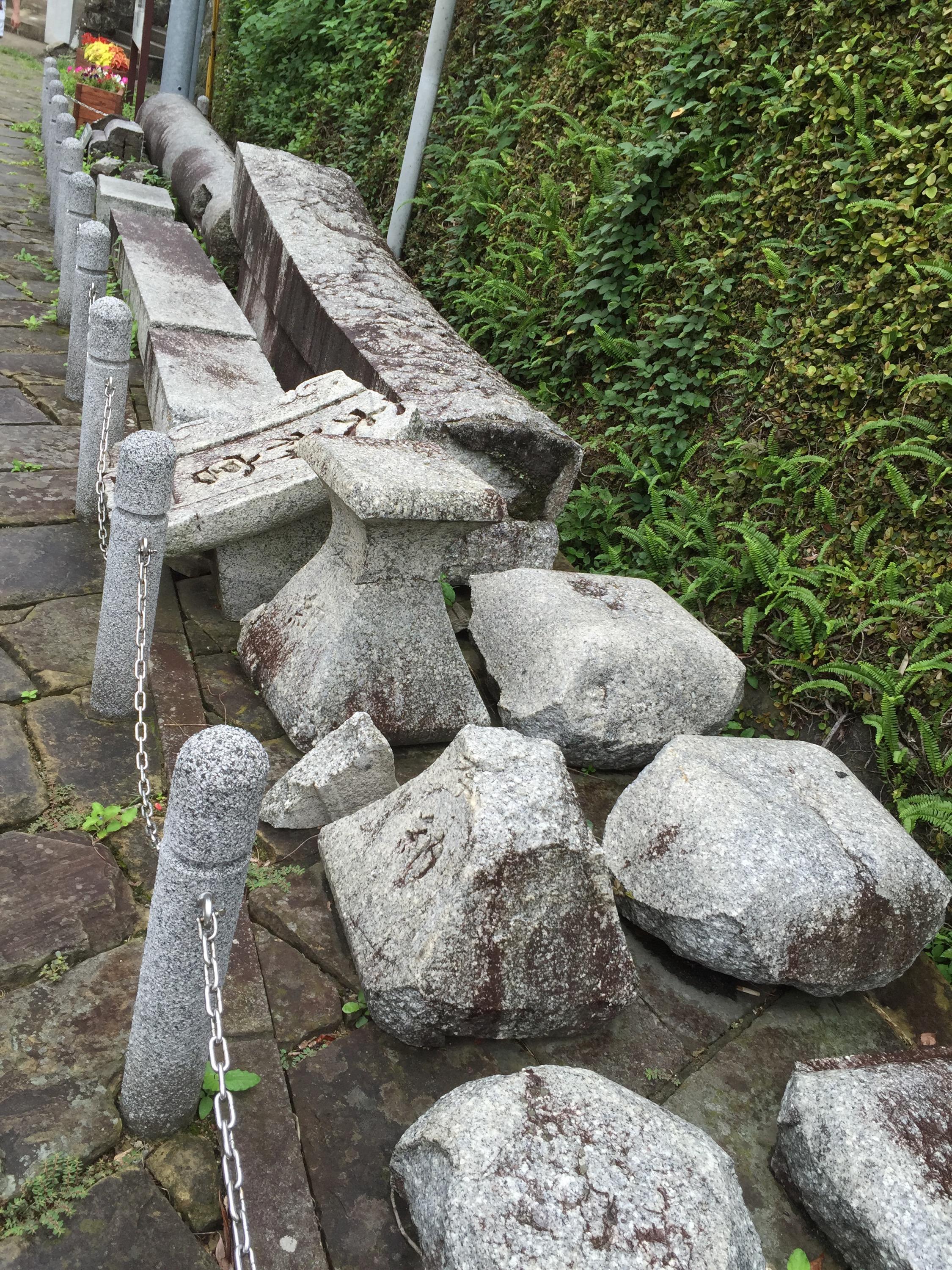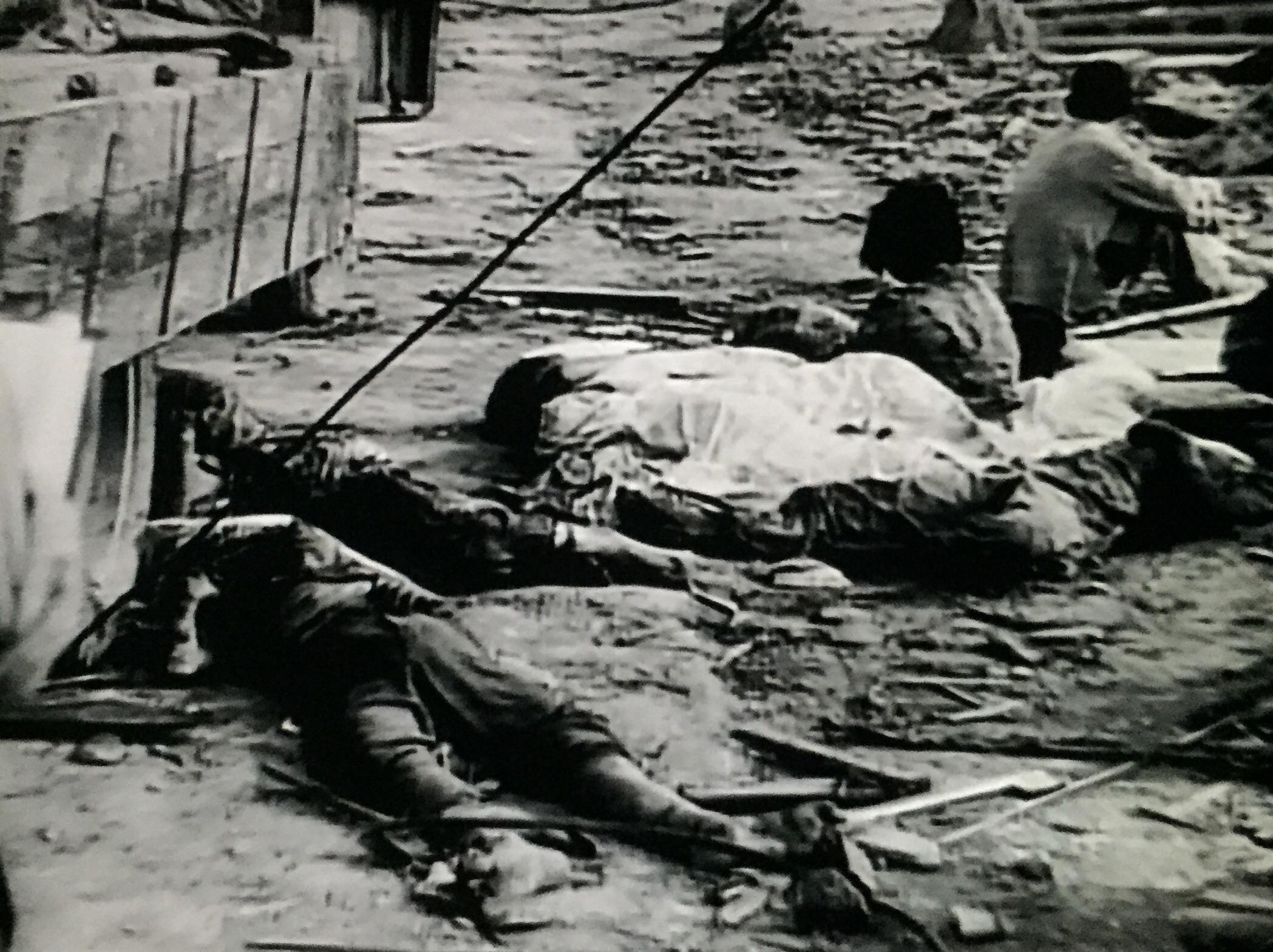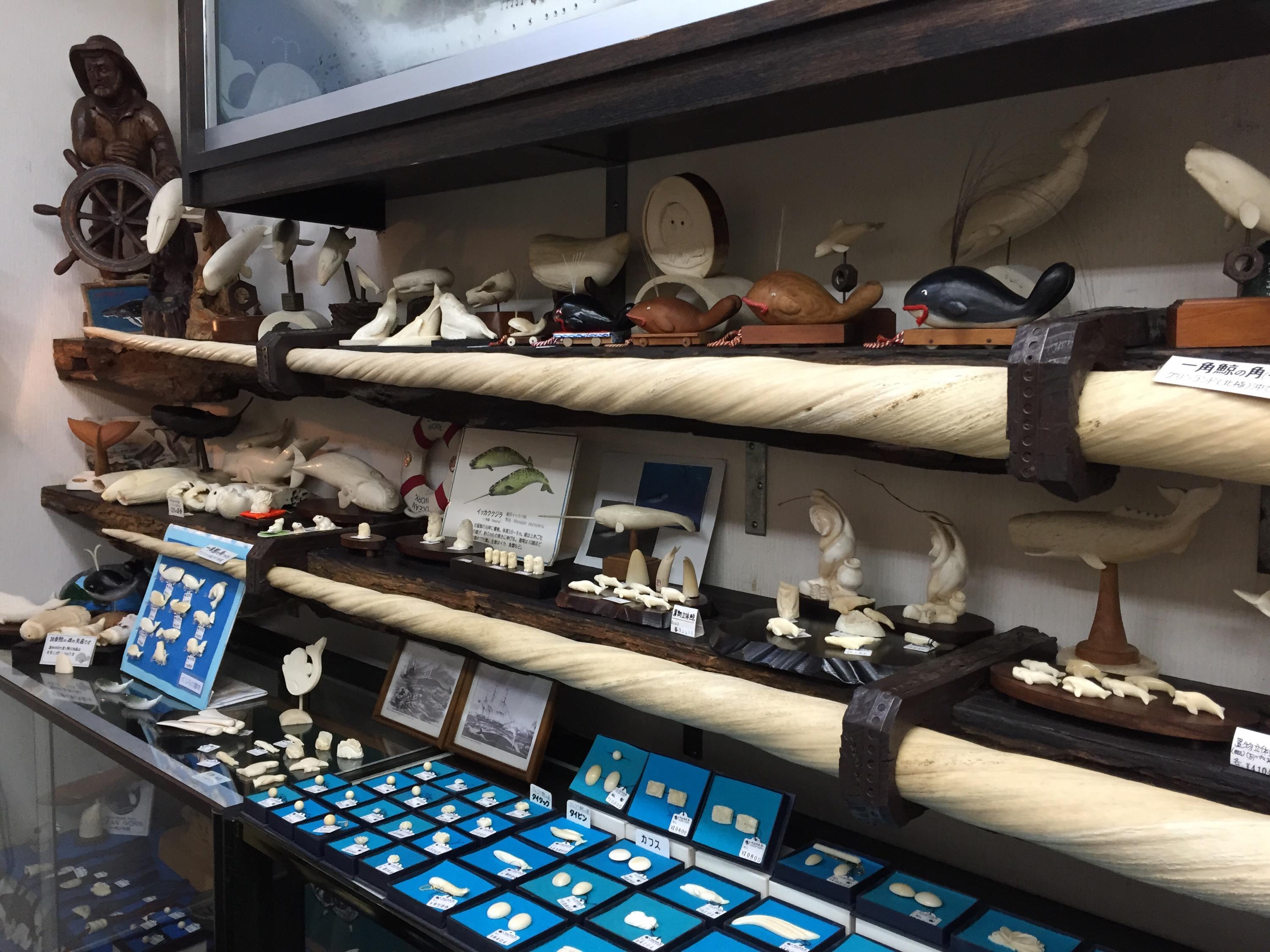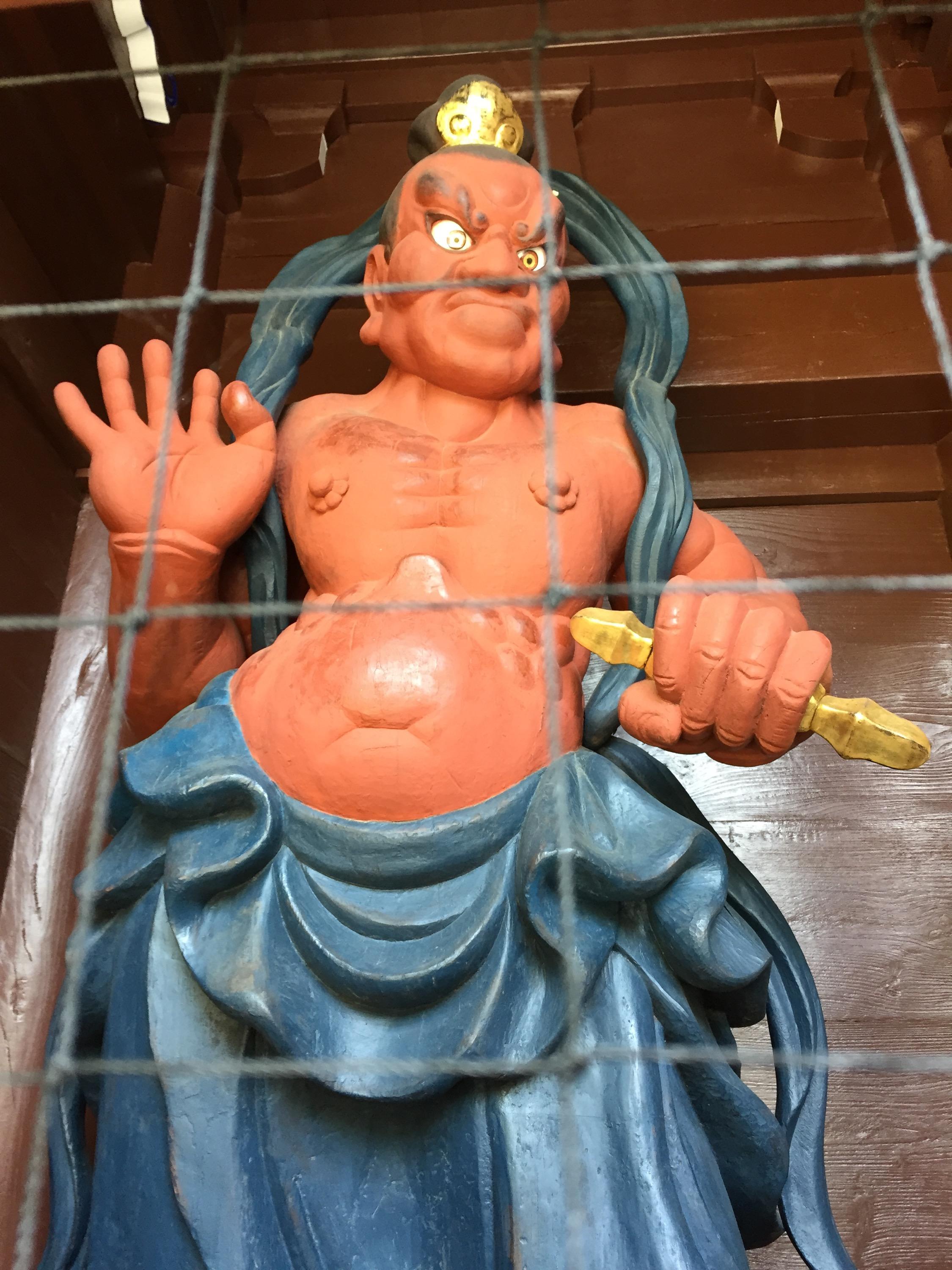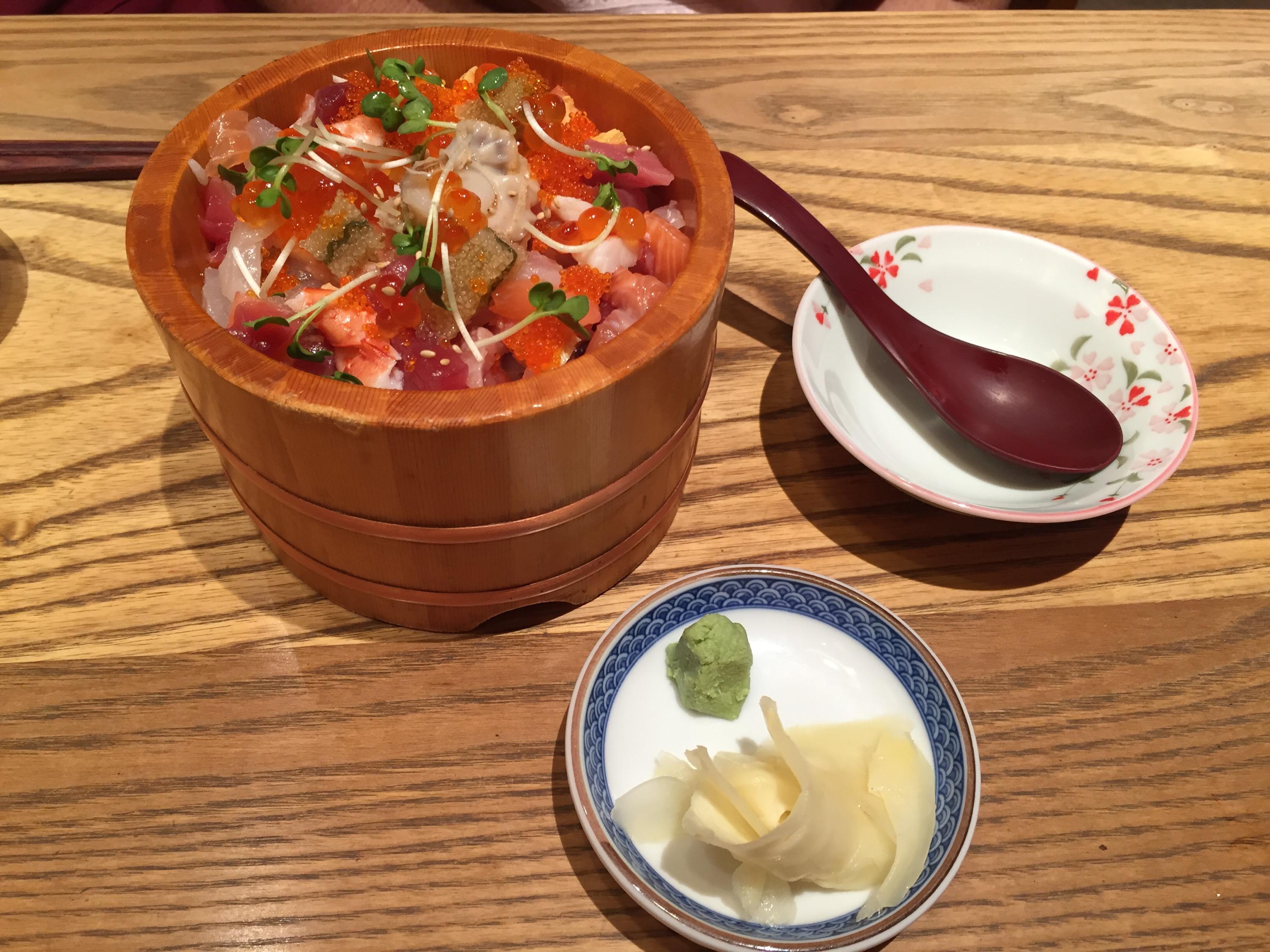Considering there doesn’t appear to be a copy of the extremely famous, ‘Great Wave off Kanugawa’ to be seen anywhere in Japan, I am constantly surprised at how happy they are to market it anyway! It’s on EVERYTHING.



Tag Archives: japan1
Grand Japan – Maizuru
Maizuru…
Port gateway to the beautiful, timeless city of Kyoto home to more UNESCO heritage sites than you can poke a stick at. Maizuru is where we were supposed to port this morning. However, thanks to an unforeseen mechanical issue in the middle of the night, we have arrived in Maizuru two hours late – which is proving right inconvenient to those who were planning 12 hour day tours to Kyoto, given that Kyoto is 70mins drive away. We spent nearly a week in Kyoto before joining the cruise, so our day today consisted of, sleeping in, waiting for our 10:30am call to go through the Japanese immigration procedures (again), then heading into Maizuru to maybe have a look around the red brick warehouses which have been converted into a Torpedo Museum, or go hunt for some fresh sushi, and definitely go find some free wifi. 🙂 This is in no small part because when you look up Kyoto in the Lonely Planet, it takes up about 70 pages of the 600 page book, whereas when you look up Maizuru, it has half a paragraph and that basically says, ‘Maizuru is a bustling port city that services the beautiful historical city of Kyoto – so go there if you want to see anything interesting’. No shit. Even the onboard ‘Shore Expert’ on the ship is quoted as saying there is nothing much to do in Maizuru. So needless to say, we were in no hurry to get off the ship … unlike many of our fellow passengers who were quite put out to hear that we had issues during the night that were going to cut their tours to Kyoto short. (For the record – I am really impressed at the way the shore tours being cut short, is being handled… most of the full day tours include a lunch break somewhere which usually means, a drive to a lunch venue and then an hour to an hour and a half for the busload of people to be fed. So they informed everyone that their tours would be skipping lunch and they would be refunded between USD$25-$30 for the lunch they were missing, but doing this would allow participants to still maximise their time in Kyoto, to still see the amazing sights they were travelling all that way to see. Very clever and well done in my book. Another big tick as to why you would book a tour through the ship rather than make your own arrangements when travelling abroad in countries where you have communications and language barriers.)
The immigration system here is quite strict, well compared to the wishy washy lack of even stamping passports that goes on between Australia and New Zealand and the complete lack of procedures between many European countries. The way the ship operates is to bring the Japanese Customs officials onto the ship, set them up in the Club Fusion Bar (which is Deck 7 Aft), and allocate passengers a time to come down to go through the immigration process – paperwork, passports scanned, photo taken, finger printed. We went through this entering Japan at the airport, and again re-entering Japan from Russia, and now we have to do it again as we re-enter from South Korea. No biggies. Except that on the Russia re-entry, no one seemed prepared to wait for their allotted time. So, when we turned up at the 10:30am time on our card… we found a queue that snaked back past the Atrium. :/ It took an hour and a half to get to the front of the queue and was well after midday before we got off the ship that day.
So today, all the same bureaucracy is going down. We’ve been informed not to go down to immigration until 2 hours after the time allotted on our original cards (issued before the mechanical issues in the middle of the night)… but do you think the passengers are doing what they’ve been asked? Not on your life. Obviously those on tour have been given priority times over people like us who have no particular plans for the day (and so they should), but given there is very little to do in Maizuru, I can’t for the life of me figure out why somewhere around 500 or more people are lined up from the Club Fusion Bar, the entire length of the ship to the Princess Theatre (as Deck 7 Forward as you can get). Crazy.
<<video>>
It’s now about midday, and almost two hours after our original allotted time, so just about the time we have been told we can go through the immigration processes – and there is still a queue of well over 150 people down there. Where do they think they are going? The ship is in port until 11pm tonight, so even if you had things to do ashore today (in beautiful, culturally significant downtown Maizuru?!), I can’t see the point in standing in a queue for hours getting cranky about things that are beyond everyone’s control. I guess we will just have to ring for tea for two and enjoy an elegant morning tea while we wait for the queue to dissipate. 😛
*insert elegant classic music to accompany our civilised tea for two in the stateroom*
So, we eventually went down to the Club Fusion immigration at about 1:30pm. Would you believe we waited less than five minutes and were processed back into Japan? Fancy that. Oh and look, we still have 10 hours to spend in Maizuru, famous port town to Kyoto.
We did end up heading off the ship around 2pm… mostly in hunt of two things – wifi and fresh sushi. 😀 We took the five minute shuttle that dropped us into the centre of town, which of course is the JR station and then wandered over to the nearby markets/covered shopping street and went to see what we could see. And what we found was a very typical port town without much to see. As it was so late and the population of Maizuru is not huge, nearly every restaurant we went past was closed. Restaurant hours being typically between 11am and 2pm, and then re-opening at 6pm and open to midnight or some even said 3am. So we failed on the sushi front.
But we did find the visitors information centre which was all set up for the tourists off the ship. There were ladies doing tea ceremonies for people, there were others playing shakuhachi, people trying on yakuta, groups folding origami and of course, heaps of us sitting around enjoying the music and the free wifi. Happy, happy, joy, joy all round.
So glad we spend nearly a week in Kyoto before the cruise, instead of trying to cram so many culturally significant sights into the one day available through the Maizuru port. Many people on the ship were less than happy at dinner tonight.
Grand Japan – Busan, South Korea
Today we went to South Korea (Best Korea!) as the international port on this cruise for all the Japanese passengers – without it, they don’t get their duty free allowances. So the first half of the cruise stopped in Korsakov, Russia; the second half of the cruise calls in to Busan.
Busan is known as Korea’s summer capital, and has ‘superb’ (for Korea) beaches, impressive hot springs and mountainous scenery. It also appears quite striking for its gorgeous temples and inspiring infrastructure… so many seriously adventurous bridges that look more like roller coasters, and incredible highway systems. Awesome. 

 We started our day stepping out the cabin door to the back terrace and not being able to see more than about 5 meters either side of the ship. I have never seen fog like this before in my life. It was thick and cloyingly humid, and visibility was non-existent. Kudos to the Captain and his crew for navigating into berth through the pea soup. From the expressway…
We started our day stepping out the cabin door to the back terrace and not being able to see more than about 5 meters either side of the ship. I have never seen fog like this before in my life. It was thick and cloyingly humid, and visibility was non-existent. Kudos to the Captain and his crew for navigating into berth through the pea soup. From the expressway… 
 Given we were here just for the day, had little to no Korean and no time to waste figuring out the transport system etc, we were on an organised tour for the day. We had a great bus drive (worst bus driver we’ve seen in a while, but very interesting drive) across town to the Haedong Yonggunsa Temple (Dragon Palace Temple) which look out over the ocean. The temple dates back to the Goryeo Dynasty (approx 1376AD) and is one of Busan’s most well known and striking landmarks in part due to its unusual location on a rocky outcrop by the sea.
Given we were here just for the day, had little to no Korean and no time to waste figuring out the transport system etc, we were on an organised tour for the day. We had a great bus drive (worst bus driver we’ve seen in a while, but very interesting drive) across town to the Haedong Yonggunsa Temple (Dragon Palace Temple) which look out over the ocean. The temple dates back to the Goryeo Dynasty (approx 1376AD) and is one of Busan’s most well known and striking landmarks in part due to its unusual location on a rocky outcrop by the sea. 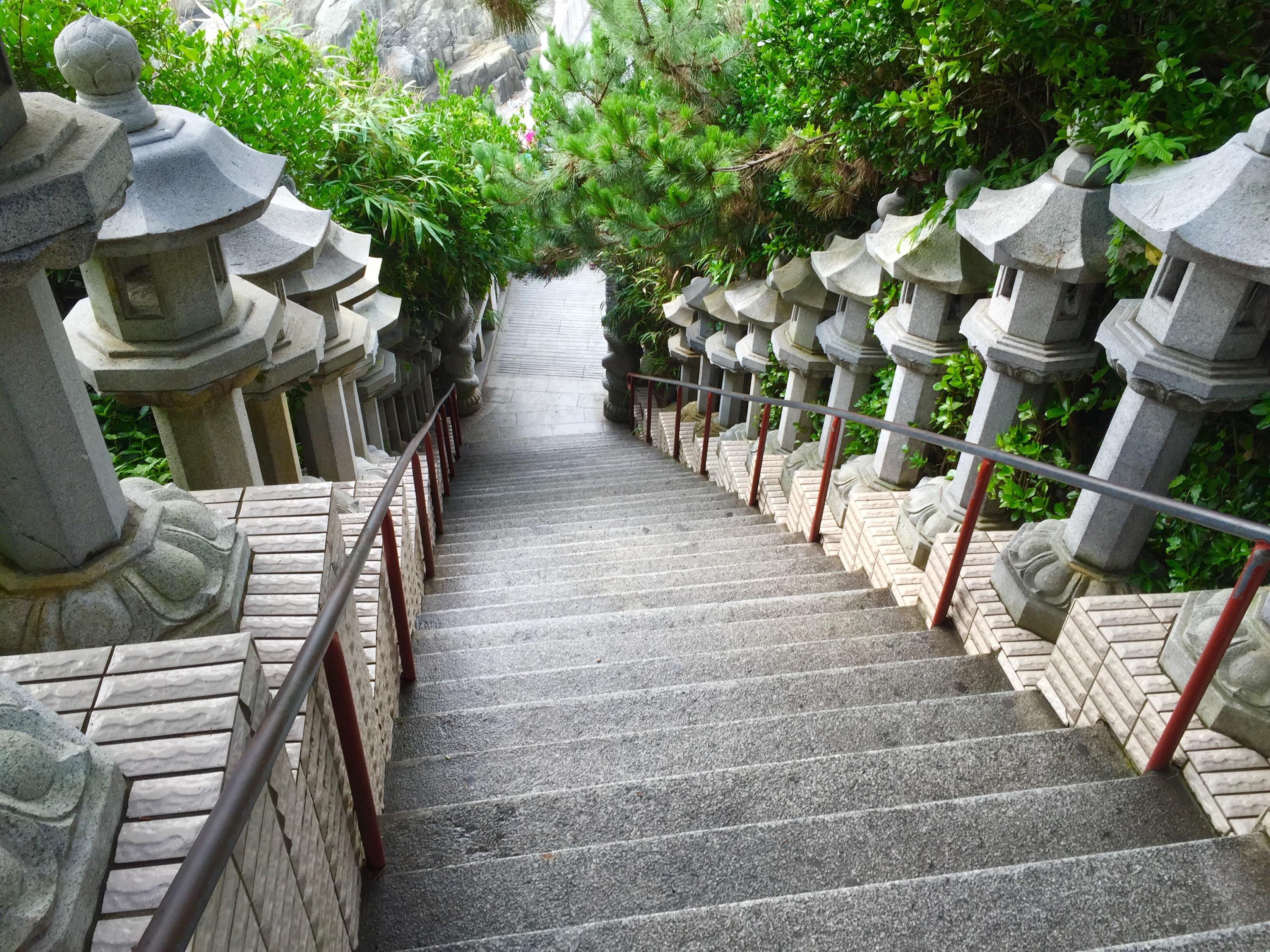

 The landscape is rugged (approximately 108 steps to get down/back), the temple is stunningly beautiful and there are many shrines and points of observance along the route.
The landscape is rugged (approximately 108 steps to get down/back), the temple is stunningly beautiful and there are many shrines and points of observance along the route. 


The temple is not like any of the Japanese temples we have seen so far. The Japanese Buddhist temples are generally plain brown, with some inlaid wood carved and painted, and brass accents… this temple, designed to look out to the Gods of the Sea, and protect the port of Busan against the weather… however, this Korean temple was also designated by the King (according to our guide, she did not specify which King, so I will have to research that later when I have better internet access), as a ‘palace’ as well as a temple – so it is brightly coloured and painted with murals and covered in coloured lanterns. 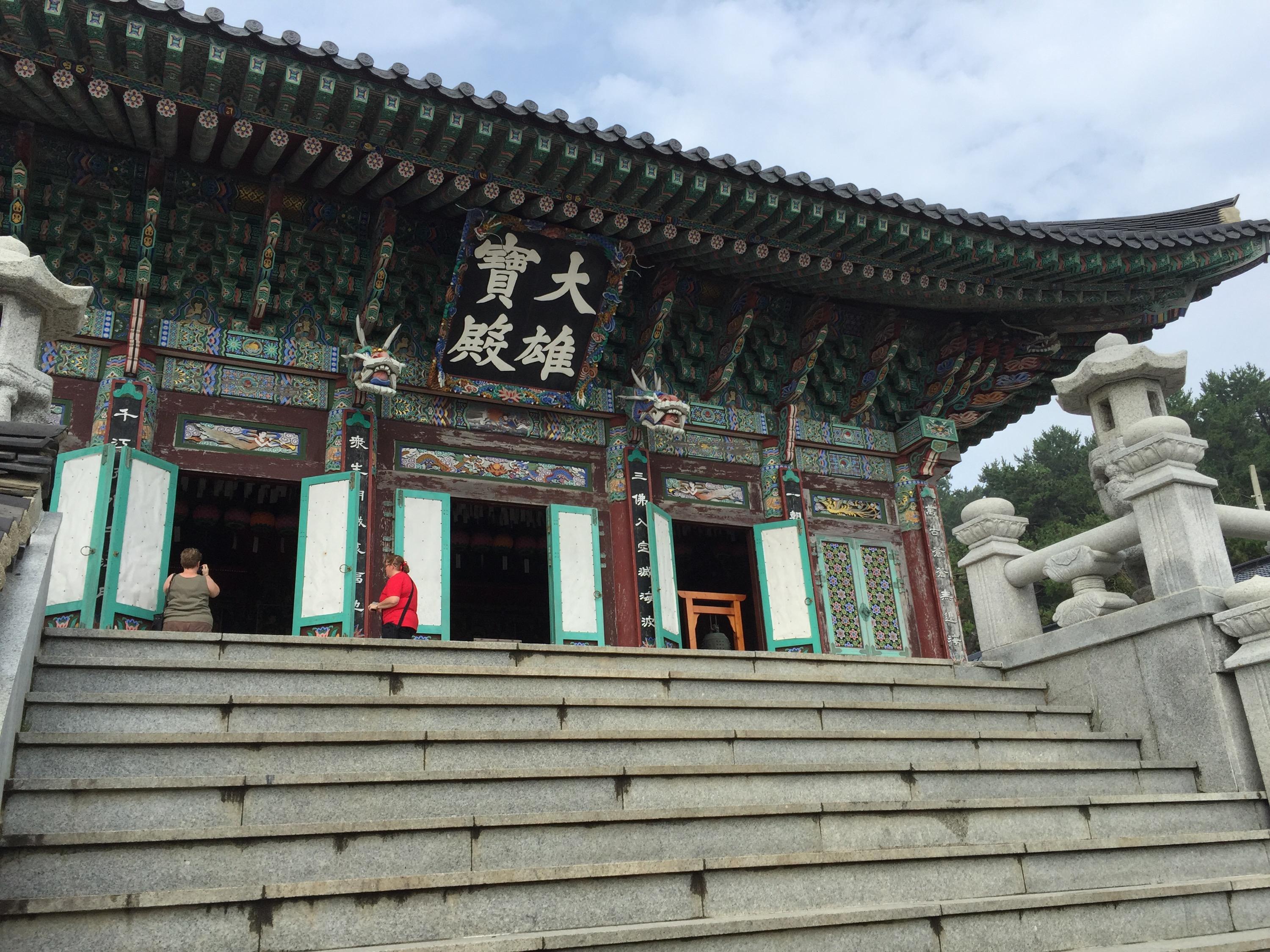
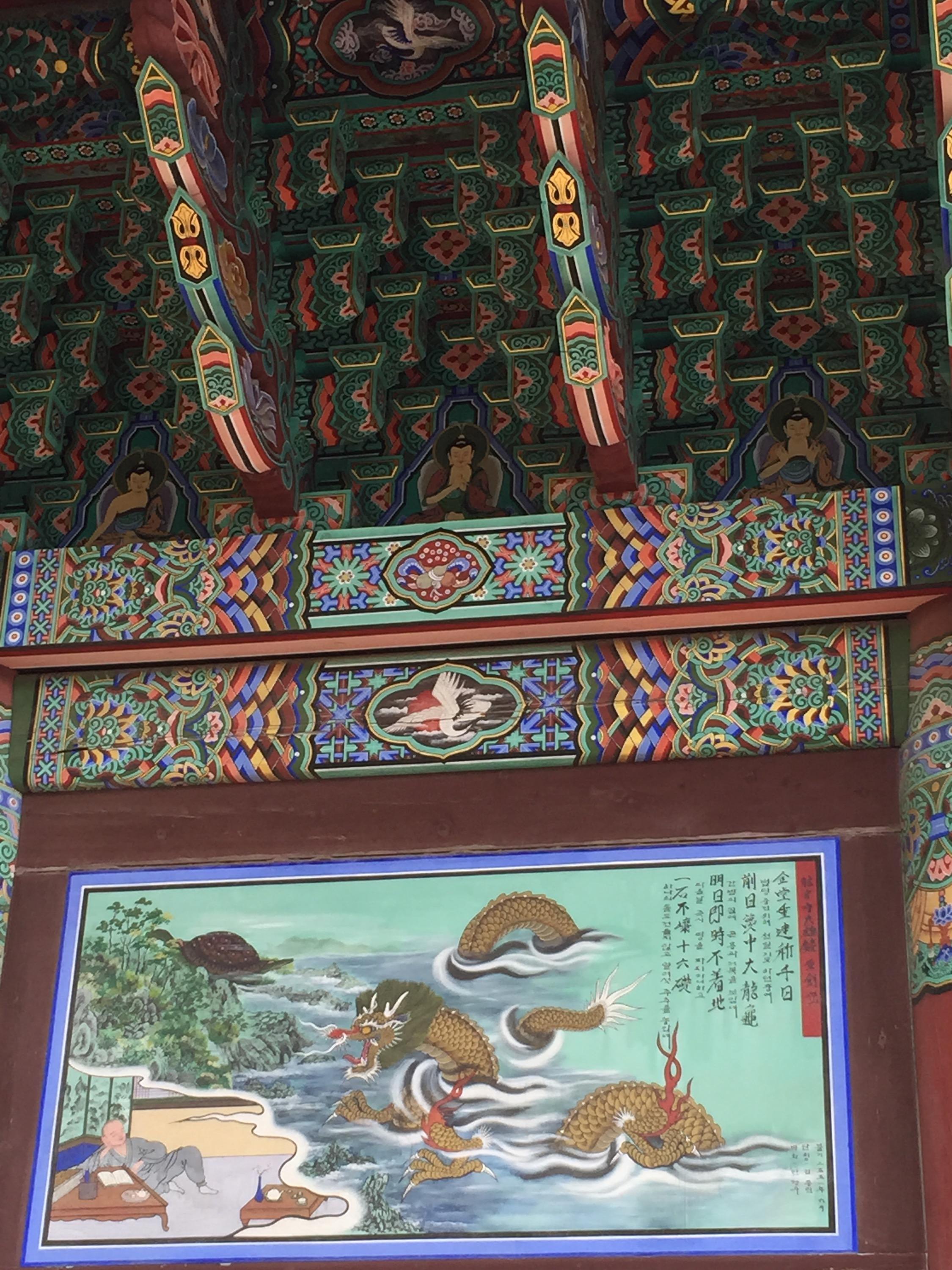



Outside the temple is an enormous Buddha with huge drooping ears (‘so Buddha can hear you best, and know everything’… I think he’s a bit like Santa Claus), as well as a large gilded turtle with a dragon for a head. The turtle/dragon is a symbol of the dragon guardian preventing bad weather. 

 Inside the temple are more statues, lanterns hung to honour and pray for individuals. Also are thousands of small lit icons with family names on them to show the prays of various temple patrons. This temple was so beautiful and also had many other spots where one could make a donation and say a pray for – road and traffic safety (this one has my name all over it!), for educational excellence, for lucky and good fortune, and for the wishes to have a son (a favourite spot to stop, say a prayer and rub Buddha’s belly, for Grandmas from all over Korea by the looks of it).
Inside the temple are more statues, lanterns hung to honour and pray for individuals. Also are thousands of small lit icons with family names on them to show the prays of various temple patrons. This temple was so beautiful and also had many other spots where one could make a donation and say a pray for – road and traffic safety (this one has my name all over it!), for educational excellence, for lucky and good fortune, and for the wishes to have a son (a favourite spot to stop, say a prayer and rub Buddha’s belly, for Grandmas from all over Korea by the looks of it). 




 After the Haedong Yonggunsa Temple, we made out way to the APEC (Asia Pacific Economic Co-operation Centre, where the 2005 APEC Conference was held and the more recent 2014 Asia Conference was held. It’s a beautifully designed building, large round dome jutting out on the peninsula surrounded by lovely parks and gardens.
After the Haedong Yonggunsa Temple, we made out way to the APEC (Asia Pacific Economic Co-operation Centre, where the 2005 APEC Conference was held and the more recent 2014 Asia Conference was held. It’s a beautifully designed building, large round dome jutting out on the peninsula surrounded by lovely parks and gardens.
In the front foyer is one of the most amazing pieces or art – an enormous wooden inlaid piece of lacquerwork, full of mother of pearl and abalone shell created by Kim Gyu-Jang, a master craftsman of Korea. The design is 6m x 2.2m and shows 12 symbols of longevity – the sun, clouds, mountains, rock, water, cranes, deer, turtles, pine trees, bamboo, mythical peach and the herb of eternal youth. Absolutely stunning. 

 After visiting the APEC centre, we drove back over the longest suspension bridge in Korea – at 7kms long, the Gwangan Grand Bridge connects Dongbaekseom Island with the mainland. Here we visited the International Markets and wandered among the street food, knock off designer goods, souvenirs shops and ice cream vendors. Had only a short wander around (sooo bloody hot!), before heading back to the ship.
After visiting the APEC centre, we drove back over the longest suspension bridge in Korea – at 7kms long, the Gwangan Grand Bridge connects Dongbaekseom Island with the mainland. Here we visited the International Markets and wandered among the street food, knock off designer goods, souvenirs shops and ice cream vendors. Had only a short wander around (sooo bloody hot!), before heading back to the ship.  For Equinom:
For Equinom:





 This was what you might consider a ‘advertising tour’ of Korea… you’d definitely have to come back to see what the place was really about, and I’d seriously like to come back again one day – only perhaps not in high summer!
This was what you might consider a ‘advertising tour’ of Korea… you’d definitely have to come back to see what the place was really about, and I’d seriously like to come back again one day – only perhaps not in high summer!
Grand Japan – Nagasaki
Nagasaki has had integral role in Japanese place in global history. It started when an off course Chinese ship landed in Kagoshima Prefecture in 1543 carrying Portuguese adventurers and guns. Catholic missionaries arrived soon after, ushering in a century of Japanese Christianity (1549-1650) very much centred in Nagasaki and Hirado.
By 1570, Nagasaki was wealthy and fashionable international port with Portuguese traders shuttling between Japan, China and Korea, and missionaries converting many Japanese to christianity. in 1580, the local daimyo (domain lord) briefly ceded control of Nagasaki to the Society of Jesuits.
In 1597 however, the shogun then reclaimed Nagasaki, expelled the Jesuits and crucified (oddly enough) 26 European and Japanese Christians. The Portuguese and Spanish traders were replaced with Protestant Dutch ones, thought to be more interested in trade than religion, and Christianity was banned altogether in 1613.
After a peasant uprising in Shimbarar in 1637-38, the shogunate forbid all foreigners from Japan and stopped all Japanese travelling overseas, in a beginning of a period called ‘sakoku’ (national seclusion) which lasted over two centuries.
When Japan reopened its doors in the mid-1850s Nagasaki was well placed to become a major economic force particularly in ship building (our ship, the Diamond Princess was built here), and of course that industry eventually led to what Nagasaki is most remembered for – the tragic bombing of Nagasaki on August 9, 1945 at the end of WWII. 
We were doing a walking tour of Nagasaki today, mostly to see the various memorials and the museum commemorating the victims of the atomic bomb. The first stop was a long climb up to the One Legged Tori Gate. As we have gathered by now, the primary religion of Japan is Shintoism and the many thousands of shrines dotting the cities and towns are all introduced by distinctive tori gates. This One Legged Tori Gate stands as a reminder of the intensity of the blast from the atomic bomb, as the other half of the gate was destroyed when the bomb hit.
From there we went to the Atomic Bomb Museum. Visiting places like this always has an impact on you, whether it is Dachau Concentration Camp or the Gallipoli Peninsula, you can’t help but be affected by the great loss of human life and the futility of war.

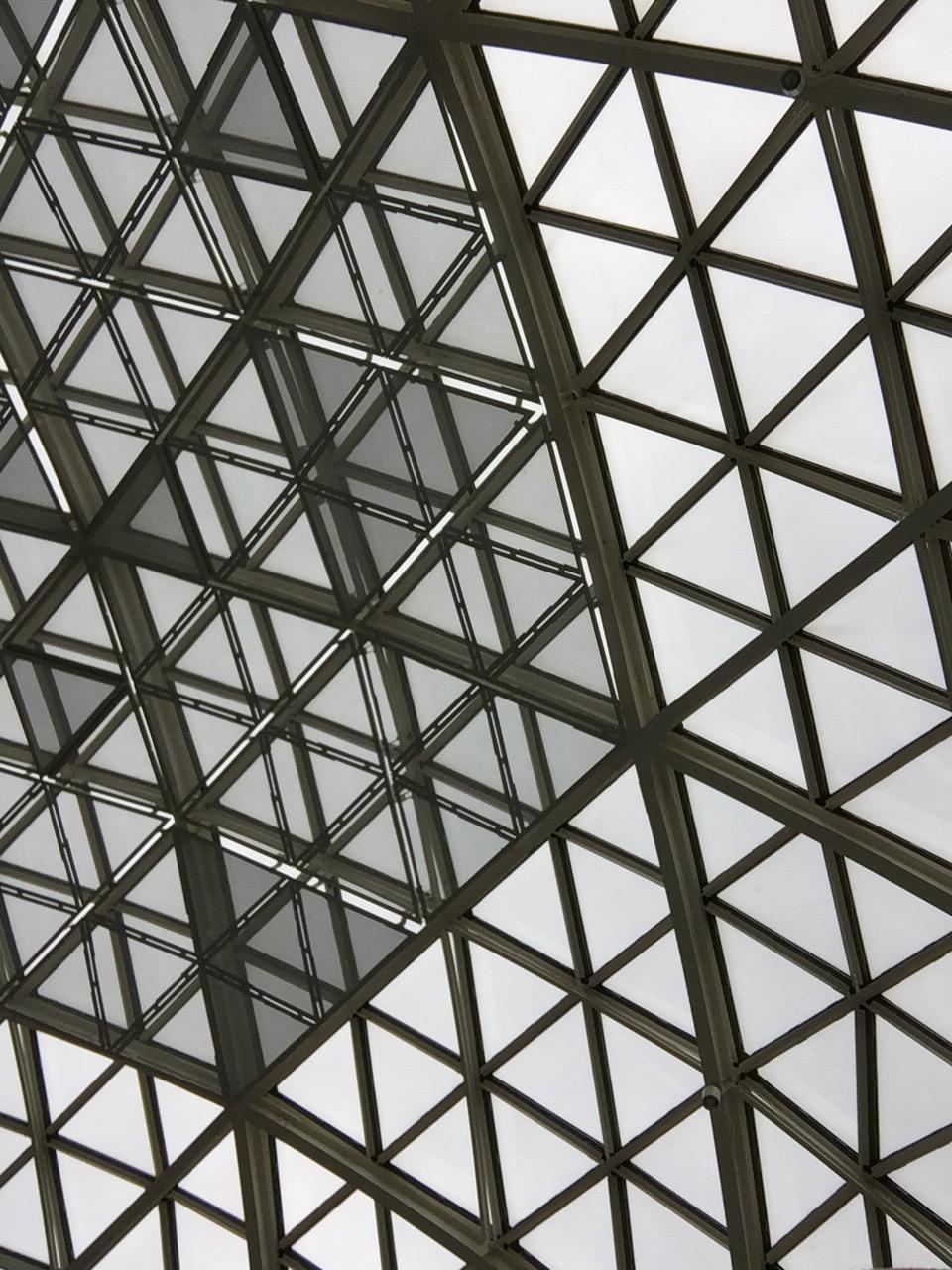




The United States Air Force B-29 bomber ‘Bock’s Car’ set off on 9th August 1945 to drop a second atomic bomb on Japan, three days after the first bomb ‘Little Boy’, was dropped on Hiroshima on August 6th. The rationale was that, in inflicting these enormous civilian casualties on Japan, the war would rapidly come to an end and countless American soldiers would be spared. As the bomber set off, it’s intended target was Kokura, however due to poor visibility of the target, the bomber was deployed to a predetermined secondary target – the Mitsubishi Arms Factory in Nagasaki.
The B-29 arrived over Nagasaki at 10:58am with heavy cloud, but when the Mitsubishi Arms Factory was sighted through the clouds, the bomb – a 4.57 tonne bomb with an explosive power equivalent to 21.3 kilo-tonnes of TNT (twice the size of ‘Little Boy’) – named ‘Fat Man’ was released. It missed its intended target and exploded at 11:02am, approximately 500m above the ground almost directly above the Urakami Cathedral (the largest Catholic church in Asia at that time).
At the time of the explosion, Nagasaki had a population of approximately 240,000 people. In an instant, it completely annihilated the suburb of Urakami and 74,000 people. A further 75,000 people were horribly injured, and another estimated 75,000 people are believed to have died from the after affects – mostly women, children and aged men as the bulk of the country’s fit young men were enlisted at the time. Ground temperatures at the epicentre of the blast have been estimated between 3000-4000 degrees centigrade, and a fiery blast still as hot as 600 degrees was felt 1.5km away. Everything within a 1km radius of the bomb site was instantly destroyed and a searing wind nearing 1000km/hr radiated from the blast.
From what we have read today, it is thought the damage could have been even worse if the targeted arms factory had been hit. Unlike the flatlands of HIroshima, or the Nagasaki port itself, the hills around the river valley appear to have protected the outlying suburbs from even greater damage.
 “Glowing red on the scorched fields, fires burning the people. My mother, too, went up in red flames. My sister too, went up in red flames and only a few ashes remained.” – Sakue Shimohira (then 11 years old)
“Glowing red on the scorched fields, fires burning the people. My mother, too, went up in red flames. My sister too, went up in red flames and only a few ashes remained.” – Sakue Shimohira (then 11 years old)
“Even those who survived, one after the other, died suffering.” Fujio Tsujimoto (then 5 years old)
“On my uncles, aunts, sisters, and friends lying there large drops of rain fell.” – Yoko Iwanga (7 years old)
“I don’t know what happened, only that there was a bright flash of light. Then, everything was destroyed.” (Testimony of survivor)
“Everything was burning, just burning. My sorrow knew no end.” – Toshihiro Fukahori (then 11 years old)
“The rapeseed oil had a shine to it that gave an otherworldly look tot he victims on whom it was rubbed. Many of those treated would suddenly pitch forward in pain and died, their bodies stiffening.” – Jun Higashi 
“All words used to describe this horrible spectacle from this day on have become, for me, inadequate.” – Jun Higash 


Bottles melted together from extreme heat at 1km from ground zero.
A school girl’s lunch box, with the contents reduced to ashes. 
Eleven ceramic plates melted together.
The shadow of a lookout man and his ladder left on a wall 1.22km from the blast site. 



Current stockpiles of nuclear weapons by country.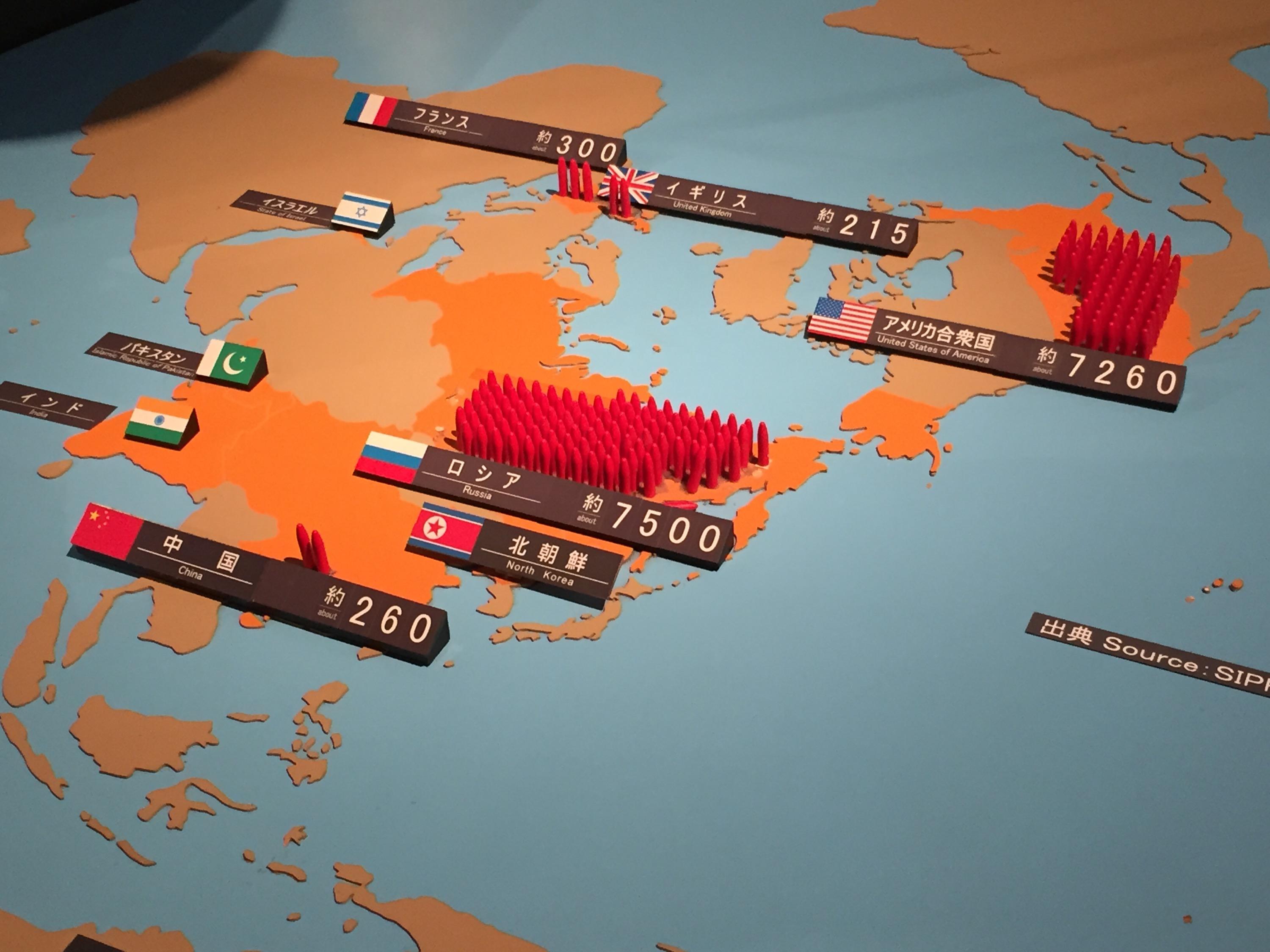

Strings of Peace Cranes. The Japanese have a tradition of sending 1000 cranes (being a symbol of long life) to people either ill or in hospital to aid their healing and wish them long life. Now, people send 1000s of origami peace cranes to the Atomic Bomb Museum to ‘heal the people’.
The nearby Peace Park contains statues and monuments sent from countries and cities all over the world to mark their commitment to peace and reducing the threat of nuclear weapons ever being used again. This monument represents all the mothers and children affected by the bombing of Nagasaki.
This monument is of a young woman – with her long sleeves, you can tell she is unmarried – she represents the lost youth of those in Nagasaki when the bomb was dropped. Surrounded by more brightly coloured cranes full of hope and healing for the future, it makes a poignant image on an overcast day.
The Ground Zero Park, marking the epicentre of where Fat Man was dropped. To the right, marks the remains of the Urakami Cathedral.
The water fountain at the Peace Park is marked by a poem written by a small child (I will have to research it later) which expresses how they were forced to drink water covered in oil to survive after the bomb.
A sculpture from the US, depicting seven bodies on the seven continents in a state of interdependency… not quite sure what to make of this one considering the US caused this horrific event.
The giant statue in the Peace Park – his one hand points up to denote where the threat of nuclear bombs comes from and his other hand reaching out to the people. This year marks the 70th anniversary of when this bomb was dropped, and large commemorations are underway for just a few short days from now.
All up we have a very moving day walking around the memorials of Nagasaki and after such a draining day we grabbed a cab and went down town for a bit of late lunch and light hearted shopping. The most weird thing I saw in the shops today (yes, most of the weirdnesses are becoming commonplace now), was this Nagasaki Ocean Ivory shop… which was FULL of whale bone products. Pieces of whale teeth on necklaces, carved whale bone items AND actual NARWHAL teeth/horns for sale!
WOW! I have only ever seen these in museums before. If I thought I would get it through customs…
Grand Japan – Diabutsu Buddha Kamakura
Big Buddha Day
Yokahama for change over day. The 17 nights Grand Japan cruise we are doing is actually two cruises, one 9 night cruise in the north and one 8 day cruise around the southern islands. So today, we are losing half the passengers from the ship and gaining a pile of new neighbours. 🙂 For transit passengers, like ourselves, there is a free day to spend in Yokohama. We spent the morning headed over to see Diabutsu – the Great Buddha of Kamakura. Diabutsu is literally the Japanese word for ‘great Buddha’. The monumental bronze seated Buddha is located at the Kotokuin Temple in Kamakura, and according to temple records, it dates back to 1252 in the Kamakura era. No one knows who made the prototype of the Buddha, but the bronze caster is said to be one, Ono Goroemon, of whom absolutely nothing is known but his name.
Fast facts about the Kamakura Diabutsu:
Date of Construction: 1252AD
Weight: approximately 121 tonnes
Height: 13.4m
Height of the cast: 11m
Face: 2.35m
Eyes: 1.00m
Ears: 1.90m
Mouth: 0.82m
Knee to Knee: 9.10m
And… it is deliberately not in proportion so as to look well when gazed upon from below. That is, Buddha has a big head.
The first image of the Buddha was made in 1243 in wood, and took five years to complete, however it was damaged in a storm in 1248. After this it was decided to built it in bronze, and a great deal of money was needed for this purpose, raised by a Lady Idanono-Tsubone and a priest Joko. Its creation was celebrated on August 17, 1252… it is the same Buddhas that rests here now, in spite of several natural disasters. Originally the bronze buddha was covered in gold leaf, and enshrined in a large timber building, but that was destroyed by a storm in 1334. It was reconstructed, but once again was smashed by a heavy gale in 1369. Another reconstructed shrine covered the buddha in 1498, but that was swept away by an unprecedented tidal wave/tsunami, and yet again another effort to enshrine the buddha in a great hall was attempted in 1718, but was abandoned when the then, 36th Abbott of the Tempe Zojoji of the Jodo Sect passed away.. The Great Buddha has been left to elements – rain, hail and shine, ever since. Even a great earthquake in September 1923 did not harm the Buddha, but damaged the base which was repaired in 1925. The latest repairs were done in 1960-61 to reinforce the neck of the statue and make it possible for the buddha’s body to move freely on the base in the event of a really strong earthquake. The Kamakura Diabutsu has stood for 800 years and looks likely to stay that way.




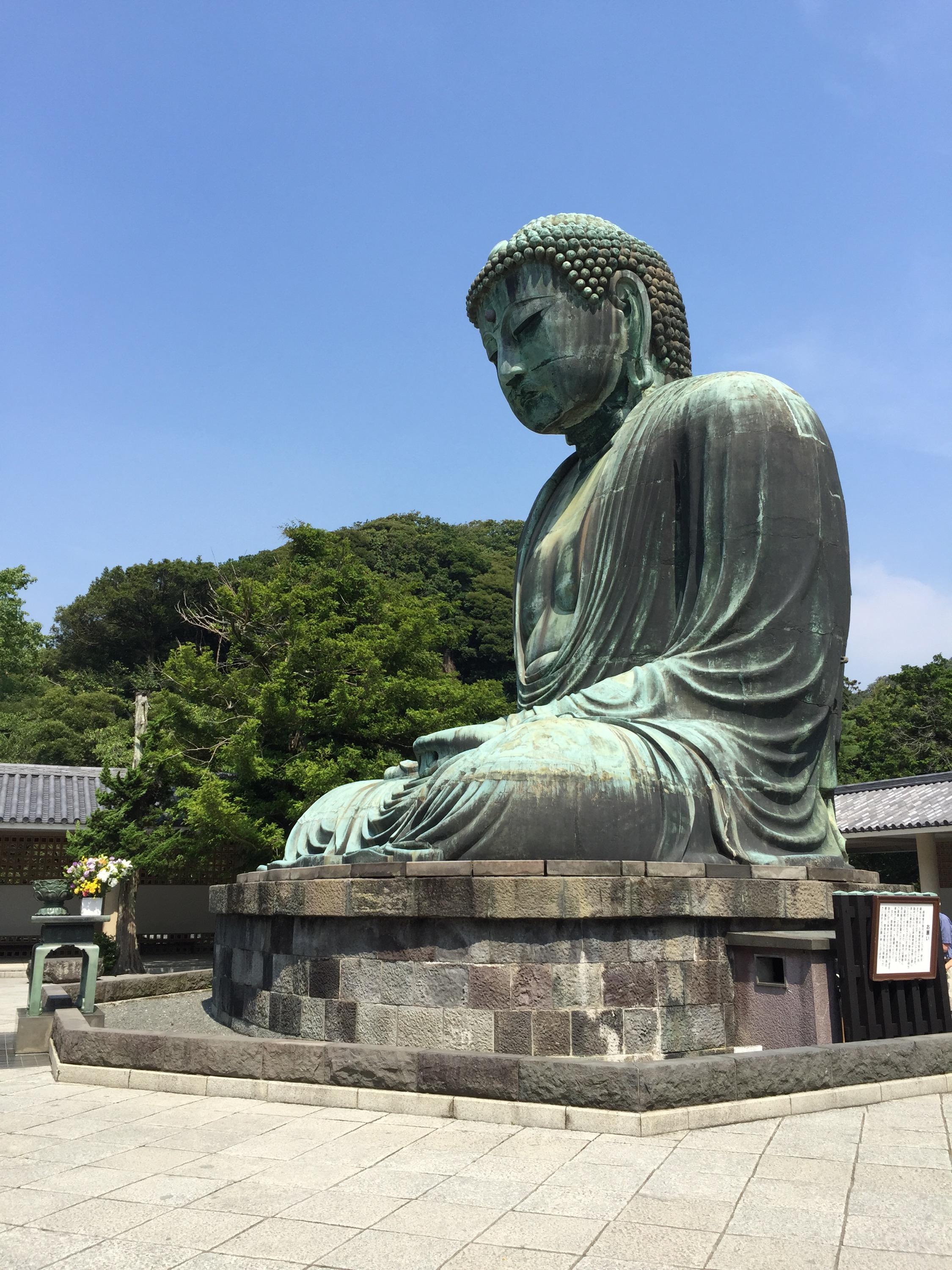



After that we went to the Hachim Angu Shrine, which is a Shinto Shrine built to honour the Gods of War. There were two statues in the main gate of this shrine guarding it much like the guardian dogs normally do – and again, one on his right had his mouth open in aggression and the one on the left was closed mouth in silence. The only noticeable difference between this Shrine and many of the others we had visited was a gigantic wall of sake barrels… there were perhaps 100 of them in a frame, standing about four meters tall. I have not seen this at any other shrines so far, and the barrels appear to have come from breweries all over the country. While we were there, we happened upon a Shinto wedding, with a bride resplendent in a pure white kimono and traditional horned headdress. The groom was in a formal black kimono and their respective families were in attendance in either formal kimono or what you would call, semi-formal western attire. There were priests in orange, drums and pipe being played by acolytes in blue and a very elegant procession. It was quite the spectacle. Now for those of us who had just walked up the 60 steep stairs to the shrine at about 11am… I was amazed at the seeming poise and elegance of this procession, particularly given it was 38C today and over 90% humidity! Such long heavy robes in this weather?! We were sweating like pigs and they were out in it, getting married. The Shrine was beautiful, we made some more wishes – something so simple and about paying your observances with a token donation and a wish for good health, or safe travels, or happy families.
After this we wandered through the shops for a while, looking at beautiful designer chopsticks, leather goods, fans, yakuta, ceramics, lacquerware, and all sort of weird and wonderful food stuffs. Then it was back to Yokohama proper for some lunch.






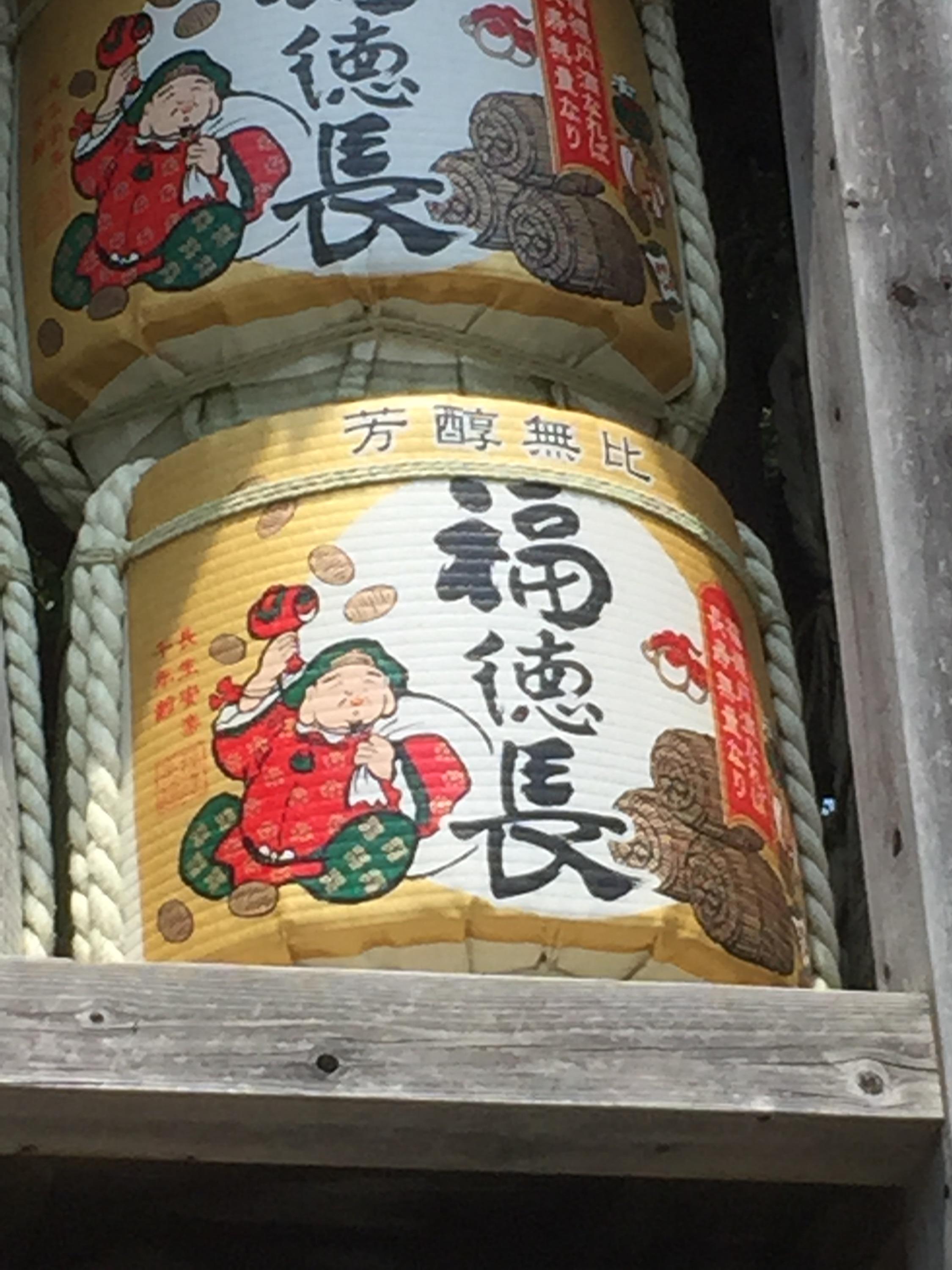








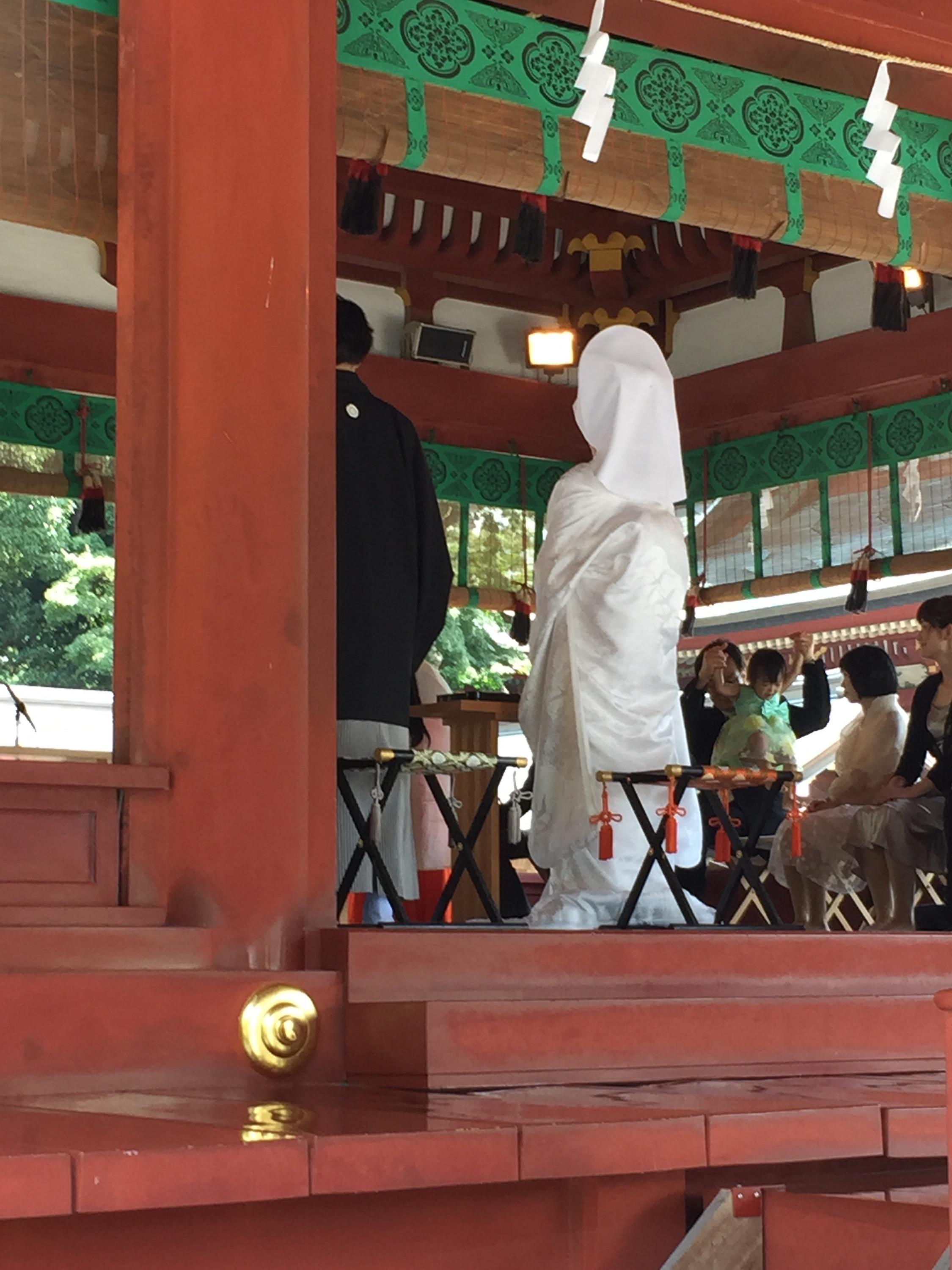


Fly by the beaches of Tokyo and we saw thousands of locals trying to escape the heat.

After this we wandered through the shops for a while, looking at beautiful designer chopsticks, leather goods, fans, yakuta, ceramics, lacquerware, and all sort of weird and wonderful food stuffs. Then it was back to Yokohama proper for some lunch.
Aunty Mary and I found the most amazing sushi restaurant. Saw pictures of the food on the outside of a shopping mall, and basically asked a mall security lady to ‘please, where is this?’ We found ourselves up on the 7th floor of an enormous shopping centre, and casting around for a restaurant with no name – just a symbol out front that neither of us recognised. We put our name down on a list (there were people lined up out the door at 2pm waiting for food, always a good sign), and had the most delicious fresh sushi lunch – salmon, tuna, mackerel, cuttlefish, herring roe, squid, salmon roe… so many delicious fishes. Mum ordered a very cool raw fish salad of sorts, and it was as delicious as it was beautiful. So if you happen to find yourself in Yokohama a the Lumine Shopping Centre, look for this place up on floor 7, and do yourself a favour… stop and fill up on fresh sushi. 🙂
While we were enjoying a leisurely plum wine with our sushi lunch, the boys had gone off hunting for manga and anime shops – they’ve been eyeing off figurines to take home. Apparently they had the second worst burgers in town for lunch, they said. Sucks to be them. 😀 But they did manage to find some figurines of that little green haired chick who has a singing career but who doesn’t really exist and whose name completely escapes me right now… :/ We also chased the Pokemon Centre at the Landmark Shopping Centre and the Jump Shop which is also full of manga stuff. 🙂 Hopefully this means we won’t have to round back on Akihabara when we get back to Tokyo in a week or so.


























